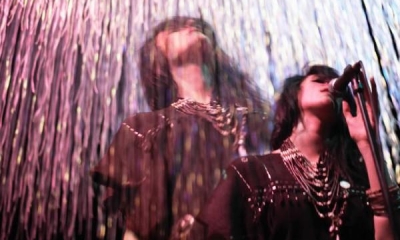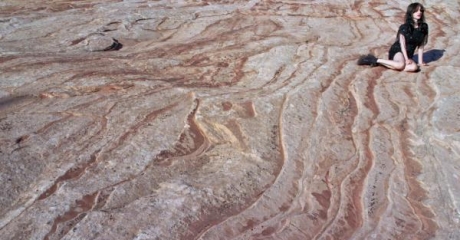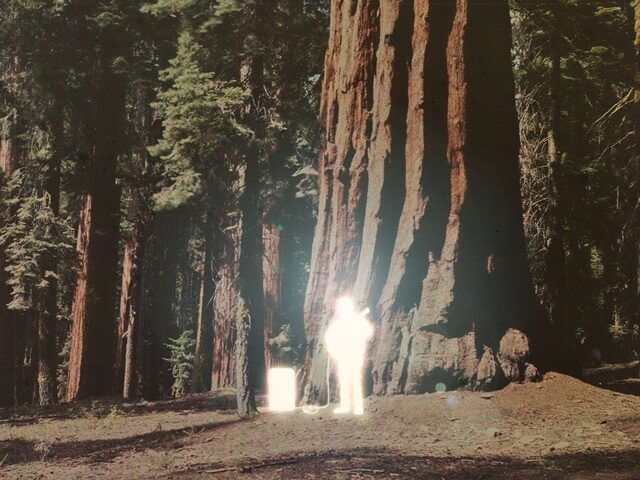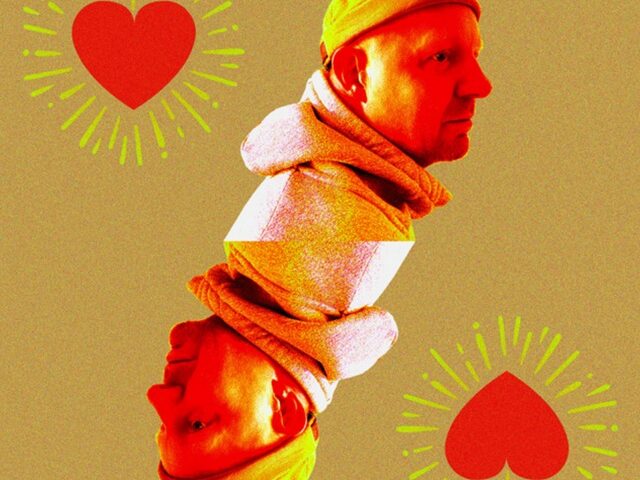
This generation of dream-pop artists are more successful than most genre revivalists, which aside from great songwriting can be attributed to dream-pop’s straying from anything resembling “outdated”. In the realm of electronic pop, Erasure’s debut album, Wonderland, was one of the catchiest releases of the ’80s. But it was also marked by production that, by today’s standards, is clearly outdated. In addition to Wonderland, Flood produced classics by The Smashing Pumpkins, U2, PJ Harvey, and Depeche Mode, all of which find their material replayed today and remembered as reverential touching stones rather than outdated relics of an era. His chameleon-like abilities allowed him to shift between decades and styles, even if he stayed in the alternative category for the most part.
Flood’s talent as a producer is evident, and his diverse success comes from his tendency to produce for the songwriter’s own strengths; instead of treating it like an assigned job, his work instead resembles a personal engagement. Thus, if Vince Clarke’s songwriting is entrenched in an ’80s ideology, he will not risk cohesiveness for the sake of stylistic alteration. This practice was echoed for the rest of Erasure’s career, Flood producing or not, and it resulted in their enduring success. So ask, what other bands were created in the ’80s and still produce good albums? Depeche Mode, Pet Shop Boys, Erasure… you get the point. All bands that are not afraid to retain the sound that their fans are familiar with, all because they recognize how to produce songs in accordance with their strengths as songwriters and instrumentalists. Think about it… none of those bands have ever had a “disastrous” album because of their fearless attitude toward the future of their respective genres. And they probably never will.
The songwriting on Wonderland was no weaker than any classic, but it was consumed in a sound defined by its time. Erasure did not find overseas success until the popularization of synth-laden dance clubs coincided with their releases, showing the rest of the world just how far the British duo was above their contemporaries. And by that, I am not referring to artists like Depeche Mode, who were in more industrial territory by then. By Erasure’s breakout, they had elevated themselves beyond conventional synth-pop at the time, and more into the sophisticated synth-rock fusion that defined most of their later material. Another popular emerging genre at the time was dream-pop, a classification that is certainly more popular in 2010 than when its forefathers burst out in the mid ’80s. Much of it was indebted to fans of ’60s pop, who combined those harmonic additives with guitar tones and layers of production that were not available during the British Invasion. It is comparable to how clips from the ’80s and ’90s are now used as samples in the songs of today… a relic from the past re-energized in a new light.

Now dream-pop finds itself in an interesting place. It was originally the byproduct of an adoration for revivalist genres and contemporary production, which one could say for most sub-genres. But now a new breed of dream-pop has emerged, one that takes the original ’60s influences but with doses of ’80s post-punk, ’90s alt-rock, and ’00s indie-rock to produce quite a remarkable sound (when done in the vein of a Beach House, Grizzly Bear, or The Radio Dept.). One may notice from these three examples that many genres – from folk to electronica – intersect at this point, especially in regard to the newly inducted “chillwave” label. Dream-pop and chillwave do dabble in a variety of similar components, but their differing points are related solely to the production. The Flood’s of today are now faced with a similar situation, asking whether to abide by the conventions of pre-made sub-genres or align themselves with a songwriter’s individual strengths. It can be so easy to become allured by a stylistic trend, only to abandon an artist’s true strengths in favor of which genre-of-the-month audiences are searching for on Google.
This was originally intended to be a feature of up-and-coming dream-pop artist Tamaryn. There is little that I need to further address though, as their debut album The Waves excelled in piquing my interest in its beautiful intersection of genres, indicative of the more positive trend stated in the previous paragraph. While some of the California-based group’s songs do show the signs of inexperience (the blissful melodies are occasionally over-distorted or cluttered, or there is an over-reliance on tone over melody), there are so many worthwhile attempts here that it puts The Waves up along any dream-pop release of this year. Appearing on Mexican Summer – the same label as Ariel Pink, Best Coast, and Washed Out – Tamaryn fits in perfectly with the meshing of dream-pop, post-punk, and blurred-out avant-garde that has brought the label great recognition. Get lost in the brooding drag that is “Choirs of Winter”, or become immersed in a self-titled cut that transitions between squeaky clean post-punk riffs and boisterous eruptions of noise, reaching a point of immersible bliss that is saved only for a special type of artist.
It is the type that produces to their own strengths, failing to abide by stylistic customs to attain a larger following. Whatever you want to call Tamaryn – whether it be dream-pop, post-punk revivalism, or even chillwave – it is clear that the band’s music excells in their own personalized format.
——————————————————————————————
[audio:http://mineorecords.com/mp3/tama-cho.mp3]——————————————————————————————
[audio:http://mineorecords.com/mp3/tama-wav.mp3]——————————————————————————————
[audio:http://mineorecords.com/mp3/slo-ali.mp3]——————————————————————————————
[audio:http://mineorecords.com/mp3/eras-cry.mp3]——————————————————————————————
Mazzy Star – Flowers in December
——————————————————————————————
Depeche Mode – Blasphemous Rumors
——————————————————————————————
Beach House – Walk in the Park
——————————————————————————————






Mike,
I met you the other night haha, I’m Aakash’s friend.
Great portion-post on Tamaryn, the album is amazing.
haha nice, thanks a lot man. the album speaks for itself. some really great songs on there, tracks 1 -> 5 are all great
Listening to Tamaryn’s “Choirs of Winter” right now..
I love the subtleness of this song…easy going, meditative even. Sometimes I think some artists forget that simplicity is just as powerful as something “forced”.
Good to see that Tamaryn has mastered the “simplicity” effect in this song. =)
SirIndie
SirIndie.com
Interesting take on Erasure. Over here in UK, they are treated with something approaching derision – music for gay discos and for single women over 40 at cheesy nightspots. Vince Clarke is much more fondly remembered for his brief time with Depeche mode and for Yazoo.
Erasure are pretty much regarded as a comic book bank and would never be mentioned in the same breath as Slowdive, for instance.
exceptional post, thanx! ;)*
John, I didn’t mean to put their quality in the same breath as Slowdive. I do believe Slowdive is more influential and ultimately rewarding than they are. I was just trying to emphasize their similar methodological practices, mainly in how they align their style of production with their own strengths as songwriters. Erasure sounds outdated and Slowdive doesn’t… Slowdive’s genre happens to be more progressive than the disco-fueled sounds of Erasure, which pretty much shows why Slowdive is more revered by critics at the moment. of course, it would be easy to say that synth-pop is simply more flimsy than the intricate construction of dream-pop, but there are more methodological practices at work.
I think Erasure’s inclusion here was both chronologically and stylistically relevant, as their place during the emergence of dream-pop in general stands as a good analytical comparative point as to what the decade’s expectations were at the time. now as we review how today’s version of dream-pop was influenced by the past – both in adoration for the ’60s and ’80s – I find reference points like Erasure and Depeche Mode very beneficial in understand just why today’s version of dream-pop seems even more commercially successful than its initial inception in the mid ’80s.
I can understand why the Dream-Pop genre could be more popular today than in the 80’s. With advancements in live sound dream-pop artists today have the ability to really shape a live sound that’s very close to their album sound so the audience is getting a better picture. I was shocked to hear how accurate/clean Beach House, and Grizzly Bear are live. I hope to catch Tamaryn sometime soon.
Well hello im a huge fan of dreamy music and i love like dream pop and i like crosses between dream and folk so like dream folk and bluesy stuff basically very depressing music.
And i just love mazzy star and hope sandoval (yea i know shes the singer of mazzy star) but anyway ive been searching for more music like hers, but all i can find are more up beat and pop like tunes, something that i dont really like and im surprised that this kind of music can be considered dream pop and when i heard cocteau twins it was just to harsh on my ears from mazzy star lol.
so i beg anyone and i mean anyone to please suggest me some bands like her, cause ive been searching the dream pop and shoe gazing genres to no avail so any help would really be appreciated.
i am checking out TAMARYN but then again its a bit more fast…
and to mic i really feel these genres should be kept in the dark cause it will only become mainstream and kill the music…if it gets popular.